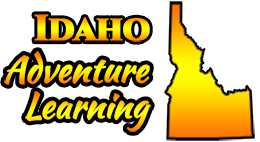Story Telling
Submitted by Christine Sandahl on Wed, 2017-06-21 00:00
I recommend taking the time to watch the digital storytelling youtube videos found under the resources tab. As a teacher, I understand that making an emotional connection on a personal level with students is essential for the best outcomes in the classroom. Helping students make an emotional connection with concepts being taught through story telling is an area of teaching that I think will have additional benefits.

Comments
Pocatello Digital Stories Available for Viewing
I agree with Christine! Check out the story-telling links. Story-telling is a powerful classroom tool.
The week of June 5, all in-person participants in the Pocatello workshop created digital stories using the free version of Wondershare Filmora. Our topic was addressing an ecosystem service that we fear losing. It was a challenge to create. Many of us had never used video editing software before so there was a learning curve there. The software was glitchy so some tech issues slowed down progress a bit. And photographs play such a huge role in creating a compelling narrative and many of us did not have ready access to the photos we would have loved to use for the project. Most of the challenges could be solved with more time and pre-planning which a week long workshop filled with many other activities could not afford. On the whole, most of us walked away pleased with our finished product given the constraints and agreed we would implement story telling more often in our lessons. The highlight of the project was watching others videos. Story-telling definitely provides insight to the perspective from which another classmate operates. The videos were a window into another person beyond a surface knowledge of the person with whom your are attending class. We all agreed that getting to know another student or colleague on a more personal level through a story-telling tool creates a classroom culture that allows for more tolerance, acceptance, empathy, sympathy, willingness to discuss and share around tough topics of discussion, and can serve as a tool of unification. If you want to view our digital stories, click on the Galleries & Video tab in the tool bar above and you will see our names highlighted as YouTube links to our videos.
Art and Science
Darcy's digital story was a treat for me to view and consider with regard to my own experiences with family, art, science and communication. My mom was an artist who encouraged my artistic side. To her dismay, I chose science as my main focus with the intent to teach - this was something mom had difficulty understanding. It would have been great to be able to communicate my love for science and teaching through artistic expression. The deep connection between art and science is something I have wanted to bring to my teaching and story-telling will give me a new tool to do so. My son focused on art as a little guy and that led to his career in graphic design which then led to a career teaching digital design. With his ability to tell a story through art, I can see and understand his motivation. I spoke with him today about digital story-telling as a tool to connect with students - I can't wait to see what he comes up with for his classes in the fall.
Story-telling for Scientists
I will share one more rememberence from the digital story-telling portion of our Pocatello workshop. Kelsey, who presented our digital story-telling unit of study, had to write a huge final dissertation on her research on pikas. When she graduated she shared her paper with her family to demonstrate to them the culmination of all her years of hard work in school. She shared her family's response was less than enthusiastic. They were not interested in slogging through a heavily academic paper loaded with statstics and scientific vocabulary. Frustrated with the gap in communication, she endeavored to create a digital story version of her paper. Her digital story of her love for, time, and research of the pika was a huge hit. She bridged the scientist/layman gap through photos, voice overs, and music. She was able to communicate in a manner that shared the details of her paper in a way that captivated an audience. She said her family members finally understood her passion and could comprehend what she was doing all those years in school. She said some of her family members acutually picked up her paper and read the whole thing after having viewed her digital story. Digital story-telling can definitely be a useful tool to communicate complicated subject manner in a way that intrigues the average audience.
Maya
“I've learned that people will forget what you said, people will forget what you did, but people will never forget how you made them feel.”
― Maya Angelou